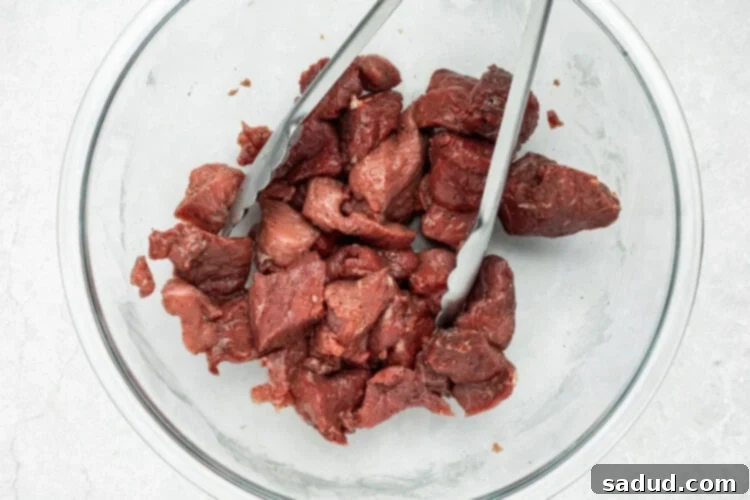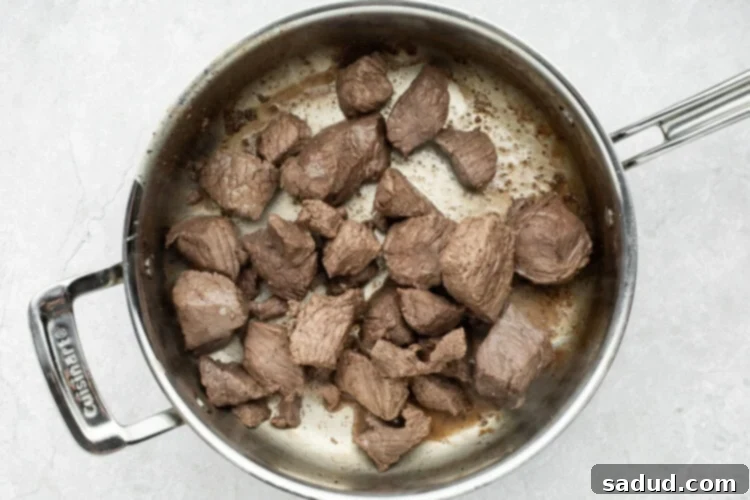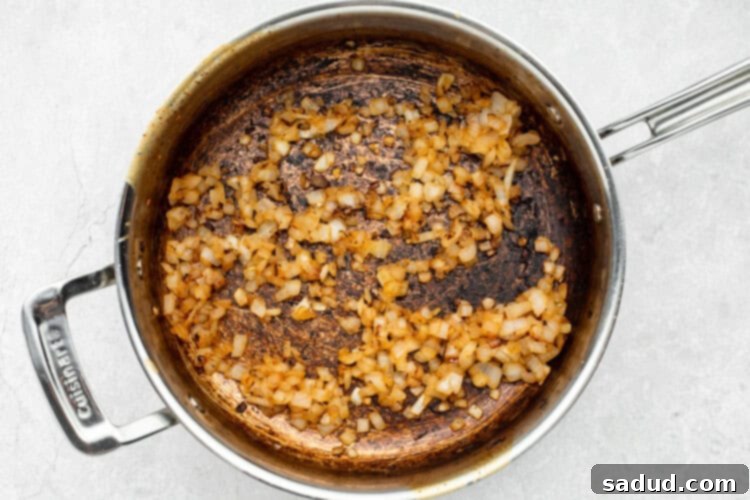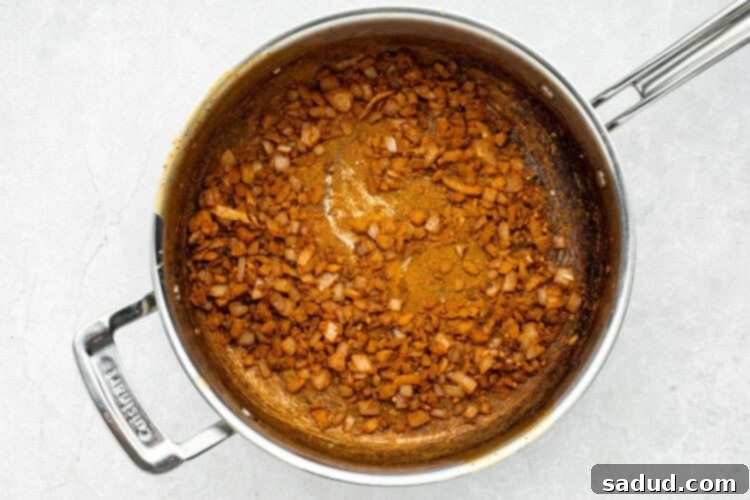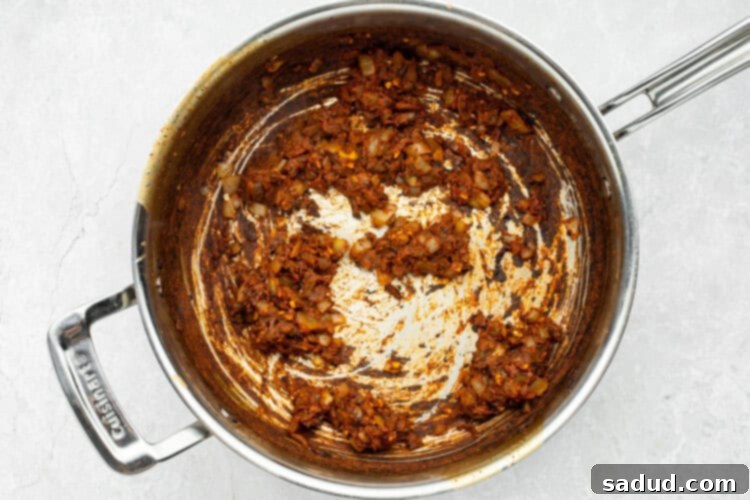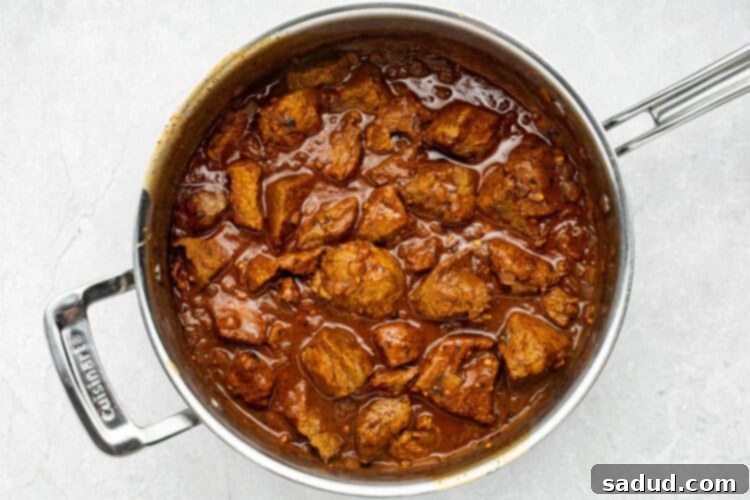Mastering Homemade Beef Vindaloo: An Authentic & Spicy Indian Curry Recipe
Experience the vibrant flavors and comforting warmth of restaurant-quality beef vindaloo, made effortlessly in your own kitchen. This beloved Indian curry features succulent, tender beef, slow-cooked to perfection in a rich, aromatic blend of spices. It’s a high-protein, one-skillet dish that promises deep, complex flavors and the perfect amount of kick, making it an ideal companion for fluffy basmati rice and warm, pillowy naan bread. Forget expensive takeout; this homemade vindaloo delivers an unparalleled culinary journey right to your dining table.
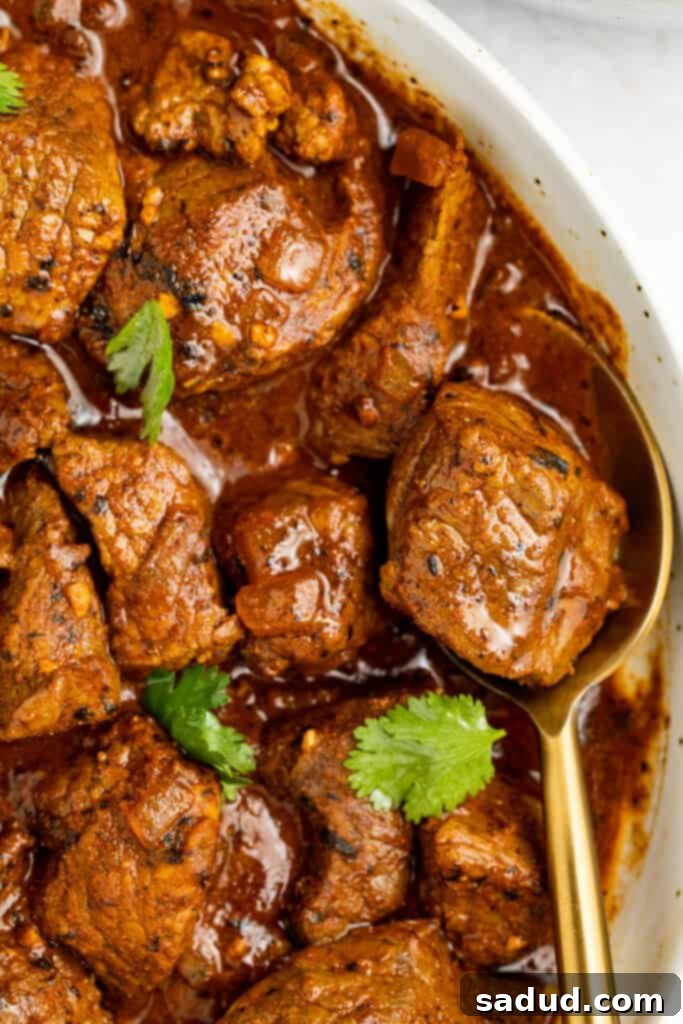
Why You’ll Love This Authentic Beef Vindaloo Recipe
This isn’t just another curry recipe; it’s a guide to creating a truly exceptional beef vindaloo that captures the essence of classic Indian cuisine while being perfectly achievable for home cooks of all skill levels. Here’s what makes this recipe an absolute must-try:
- Effortless Home Cooking: Inspired by the iconic dish found in Indian restaurants across the West, this spicy beef vindaloo is designed for accessibility. Even if you’re new to the world of Indian cooking, our step-by-step instructions ensure a seamless and enjoyable cooking experience, allowing you to replicate complex flavors with ease. The one-skillet approach minimizes cleanup, making it a convenient weeknight option.
- A Symphony of Rich, Aromatic Spices: Beef vindaloo is renowned for its bold, layered flavors, and this recipe delivers on that promise. We harness the power of a carefully selected blend of warm, earthy, and fiery spices. Each spice plays a crucial role:
- Garam Masala: Provides a warm, fragrant foundation, a cornerstone of Indian cooking.
- Cumin: Adds an earthy, pungent, and slightly bitter note.
- Paprika: Contributes a mild sweetness and a beautiful, deep red color.
- Turmeric: Offers a vibrant golden hue and subtle, earthy bitterness, along with its well-known health benefits.
- Ground Mustard: Delivers a sharp, tangy kick that complements the vinegar base.
- Ground Ginger: Infuses a fresh, pungent, and warming zest.
- Cayenne Pepper: The primary source of the dish’s characteristic heat, easily adjustable to your preference.
- Cinnamon: Adds a hint of sweet, woody warmth that balances the savory and spicy elements.
This harmonious combination creates a gravy that is both intensely flavorful and incredibly satisfying, inviting you to savor every bite.
- Customizable Heat Levels: While traditionally known for its fiery kick, this recipe empowers you to control the spice to suit your palate. If you prefer a milder curry, simply reduce the amount of cayenne pepper or omit it entirely. For those who crave an extra fiery experience, feel free to double the cayenne or even incorporate fresh red chili peppers or a dash of ghost pepper powder for an unforgettable burn. This flexibility ensures everyone at your table can enjoy this exquisite dish.
- Tender, Juicy Beef: We opt for beef chuck, a cut perfect for slow cooking, which breaks down beautifully to become incredibly tender and absorb all the rich flavors of the sauce. This results in melt-in-your-mouth beef pieces that are juicy and full of savory depth.
Exploring the Rich History of Beef Vindaloo
Vindaloo, a dish synonymous with Indian cuisine, especially in the Western world, boasts a fascinating historical journey rooted in global exploration and cultural fusion. Its origins trace back not to India, but to Portugal, specifically to the traditional Portuguese dish “Carne de Vinha d’Alhos,” which translates to “meat in garlic wine marinade.” Portuguese explorers, navigating long sea voyages in the early 1400s, would preserve meats – typically pork – in a potent marinade of wine, wine vinegar, garlic, and salt. This method was essential for keeping meat edible during their extensive travels.
As Portuguese traders and colonists arrived in Goa, India, a vibrant coastal region, the dish underwent a remarkable transformation. Goan cooks, inspired by the Portuguese methods, began adapting “Vinha d’Alhos” with local Indian ingredients. Indian red chilies replaced black pepper, and other indigenous spices like cumin, turmeric, and garam masala were introduced, creating the rich, spicy, and tangy profile we recognize today. Palm vinegar, a local Goan specialty, often substituted wine vinegar, further embedding the dish into the local culinary landscape.
Centuries later, around the 1800s, British imperialists in India encountered vindaloo. The dish continued to evolve as it made its way into British-Indian cookbooks, with an 1888 recipe for “Vindalho” featuring beef, pork, and duck. The colonizers then carried this adapted version across the globe, though its surge in popularity in Britain and other Western countries didn’t truly take off until the late 20th century, becoming a staple of Indian restaurants abroad.
It’s important to note that the vindaloo typically found in Western restaurants, including the recipe presented here, is often a further adaptation. It tends to be hotter and richer, differing significantly from the original Goan preparation, which often emphasizes a balance of sour, sweet, and savory notes with a milder heat. Our recipe below aligns more closely with the robust, flavorful British-Indian interpretation of beef vindaloo, offering a truly satisfying experience.
For those eager to delve deeper into the intricate origins and evolution of this iconic dish, you can read more about the history of beef vindaloo here or here.
Chef’s Expert Tips for the Best Beef Vindaloo
Achieving the perfect beef vindaloo at home is easier than you think with these professional insights and clever shortcuts:
- Experiment with Proteins: While beef is our personal favorite for this vindaloo, the recipe is wonderfully versatile. You can easily substitute it with other proteins like pork, lamb, or chicken. If using chicken, opt for boneless, skinless thighs for maximum flavor and tenderness. Remember that lighter meats like chicken will require significantly less cooking time than beef chuck, typically simmering for 25-35 minutes until cooked through and tender, not 60 minutes. Adjust accordingly to prevent overcooking and ensure your protein remains juicy.
- Smart Prep for Time-Saving: To streamline your cooking process, consider purchasing pre-chopped beef chuck, often labeled as “stew meat” at your local grocery store. This saves valuable time on slicing and dicing. Whether you buy it pre-cut or prepare it yourself, ensure your beef pieces are uniform in size, about 2 inches, to guarantee even cooking and consistent tenderness throughout the dish.
- The Magic of Caramelized Onions: Do not underestimate the importance of properly caramelizing your diced onions. This step, though requiring patience, is absolutely crucial for building the foundational flavor of your vindaloo sauce. Slowly cooking the onions over medium heat for 15 minutes allows their natural sugars to develop, transforming them into sweet, deeply browned, and incredibly flavorful morsels. This process adds immense depth and complexity that cannot be achieved by simply sautéing them quickly. If you notice them beginning to stick or burn, a splash of 1-2 tablespoons of water will help deglaze the pan and slow down the caramelization, ensuring a perfect result.
- Mastering the Heat: As mentioned, you have full control over the spiciness of your vindaloo. If you’re catering to palates sensitive to heat, feel free to reduce or omit the cayenne pepper entirely. For an effective way to counteract and balance the spice without altering the dish’s core flavors, always have some plain Greek yogurt on hand. A dollop or two served alongside your vindaloo provides a cooling contrast and adds a lovely creaminess that mellows the heat beautifully.
- Perfect Pairings: For a truly authentic and satisfying meal, serve your rich beef vindaloo with a generous side of fluffy basmati rice, which soaks up the flavorful sauce perfectly. Warm, soft naan bread is also a must, ideal for scooping up every last drop of that delicious curry. For an added layer of freshness, consider a simple cucumber raita or a sprinkle of fresh cilantro.
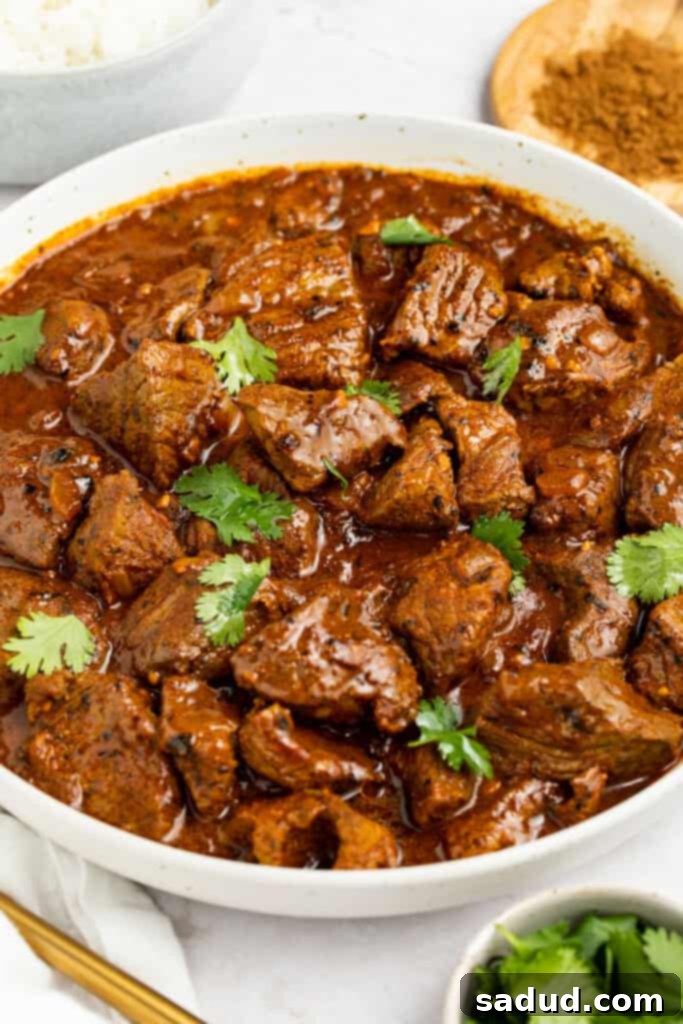
Ingredients Spotlight: What Makes Our Vindaloo Shine
Understanding the role of each ingredient can elevate your cooking experience and the final taste of your beef vindaloo. Here’s a closer look at the key components:
- Beef Chuck: This cut is chosen for its marbling and connective tissue, which break down into gelatin during slow cooking, yielding incredibly tender and flavorful results. Look for beef chuck with good marbling for the best texture and taste.
- Apple Cider Vinegar: The distinctive tang of vindaloo comes from vinegar. Apple cider vinegar adds a fruity, slightly sweet acidity that perfectly complements the rich spices and tenderizes the meat. White vinegar can be a substitute, but may offer a sharper profile.
- Aromatic Foundation (Onion & Garlic): Properly caramelized onions provide the sweet, deep base, while fresh minced garlic adds pungent aromatic notes that are essential to the curry’s complexity. These two ingredients form the backbone of the sauce.
- Tomato Paste: This concentrated ingredient provides umami depth, a touch of sweetness, and helps to thicken the sauce, contributing to its rich texture and color.
- Low-Sodium Beef Stock: Used as the primary liquid for simmering, beef stock enhances the savory flavors of the meat and forms a cohesive sauce. Using low-sodium allows you to control the salt content precisely.
Serving Suggestions & Perfect Pairings
The beauty of Beef Vindaloo lies not only in its robust flavor but also in its versatility with accompaniments. To truly complete your Indian culinary experience, consider these serving ideas:
- Basmati Rice: An absolute classic. The fragrant, long-grain basmati rice is perfect for absorbing the spicy, rich gravy of the vindaloo. Its neutral flavor provides a welcome balance to the curry’s intensity.
- Naan Bread: Soft, chewy naan bread is ideal for scooping up every last bit of sauce and tender beef. Warm it slightly before serving for the best experience. Garlic naan or butter naan can add another layer of flavor.
- Plain Greek Yogurt (or Raita): As a cooling counterpoint to the heat, a dollop of plain Greek yogurt is invaluable. For an enhanced experience, try a simple cucumber raita (yogurt mixed with grated cucumber, mint, and a pinch of cumin) to soothe the palate and add a refreshing contrast.
- Fresh Cilantro: A sprinkle of freshly chopped cilantro not only adds a burst of vibrant color but also a fresh, citrusy aroma that brightens the entire dish.
- Simple Salad: A light, crisp salad with thinly sliced red onion, cucumber, and tomato, dressed simply with lemon juice and a pinch of salt, can offer a refreshing textural contrast.
Other Delicious One-Pan Recipes You’ll Love
If you enjoy the convenience and rich flavors of this one-skillet Beef Vindaloo, you’ll definitely want to explore these other fantastic one-pan recipes that make mealtime a breeze:
- Chicken Pomodoro
- Pork Chops with Apples
- Pecan Crusted Chicken
- Cheesy Keto Green Beans
- Chicken Fricassee
Storing and Reheating Your Vindaloo
One of the many joys of cooking curry is that it often tastes even better the next day! This beef vindaloo is no exception. Proper storage and reheating will ensure you can enjoy its rich flavors for days to come.
- Storage: Allow the vindaloo to cool completely to room temperature before transferring it to an airtight container. Store it in the refrigerator for up to 3-4 days. For longer storage, vindaloo freezes beautifully. Portion it into freezer-safe containers or bags and freeze for up to 3 months. Thaw overnight in the refrigerator before reheating.
- Reheating:
- Stovetop: Transfer the desired portion of vindaloo to a saucepan. Add a splash of beef stock or water if the sauce appears too thick. Heat over medium-low heat, stirring occasionally, until thoroughly warmed through.
- Microwave: For a quick reheat, place your portion in a microwave-safe dish. Heat on medium power in 1-2 minute intervals, stirring between each, until heated through.
Ensure the beef is piping hot before serving.
If you loved this recipe as much as we did, don’t forget to leave us a review below. Your feedback helps us grow and share more delicious recipes! ★ Follow Easy Healthy Recipes on Pinterest, Facebook, and Instagram, too!
For more delicious recipes, visit our sister sites, 40 Aprons and Easy Cheap Recipes.
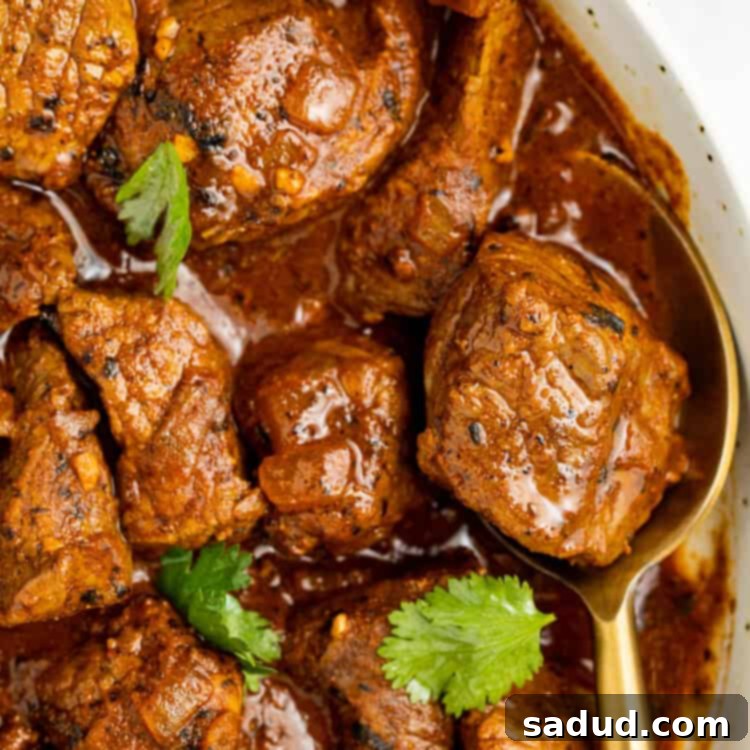
Beef Vindaloo
 Cheryl Malik
Cheryl Malik
Print
SaveSaved!
Ingredients
For the Beef
- 2 pounds beef chuck cut into 2-inch cubes; see Notes for alternatives
- 1 teaspoon salt
- ½ teaspoon freshly cracked black pepper
- 3 tablespoons neutral oil such as vegetable or canola oil
For the Sauce
- 1 medium onion finely chopped
- 3 cloves garlic minced or finely grated
- 2 teaspoons garam masala
- 2 teaspoons ground cumin
- 1 teaspoon paprika
- 1 teaspoon turmeric powder
- ½ teaspoon ground mustard
- ½ teaspoon cayenne pepper adjust to taste, omit for a more mild flavor
- ½ teaspoon ground ginger
- ½ teaspoon ground cinnamon
- 2 tablespoons tomato paste
- ¼ cup apple cider vinegar
- 1 cup low-sodium beef stock plus an additional 2-4 tablespoons as needed for sauce consistency
To Serve (All Optional)
- cooked basmati rice
- warmed naan bread
- plain Greek yogurt for a cooling contrast
- fresh cilantro chopped, for garnish
Equipment
-
Sharp kitchen knife
-
Cutting board
-
Large mixing bowl
-
Large skillet with a tight-fitting lid or a heavy-bottomed pot with lid
-
Large wooden spoon or heat-proof spatula
-
Large plate or bowl
Instructions
-
Using a sharp kitchen knife, carefully cut the beef chuck into uniform 2-inch thick cubes. Transfer these cubed beef pieces to a large mixing bowl, ensuring they are evenly sized for consistent cooking.
-
Add 1 teaspoon of salt and ½ teaspoon of freshly cracked black pepper to the mixing bowl with the beef. Toss or gently stir the beef to thoroughly coat each piece with the seasoning. Set the bowl aside to allow the flavors to meld slightly.

-
Place a large, heavy-bottomed skillet (or Dutch oven) over medium-high heat. Once the pan is sufficiently hot, add the neutral oil and swirl the pan to evenly coat the bottom surface. Continue heating the oil over medium-high heat until it shimmers, indicating it’s ready for searing.
-
Once the oil is hot and shimmery, carefully add the seasoned beef chuck to the skillet in a single layer, avoiding overcrowding the pan (work in batches if necessary). Sauté the beef, turning occasionally, until it is beautifully browned on all sides, a process which takes approximately 6 minutes. This searing step helps to develop deep flavor and seal in juices. Transfer the browned beef to a clean plate or bowl and set it aside.

-
Reduce the heat under the skillet to medium. Do not drain the skillet; the remaining drippings are full of flavor.
-
Add the finely chopped onion to the skillet. Cook for a generous 15 minutes, stirring frequently to prevent sticking, until the onion has softened, turned deeply golden brown, and caramelized. This caramelization is key for the sauce’s depth. Be vigilant not to burn the onions; if they start to darken too quickly, add 1-2 tablespoons of water to deglaze and slow the process.

-
Once the onion has achieved a rich, caramelized hue, add the minced garlic to the skillet. Stir well to incorporate the garlic with the onions, then continue to cook for 2 minutes, or until the garlic becomes fragrant and lightly softened.
-
After 2 minutes, introduce the array of ground spices: garam masala, cumin, paprika, turmeric, ground mustard, cayenne pepper (adjust according to desired heat), ground ginger, and cinnamon to the skillet. Stir vigorously to ensure all spices are fully incorporated and evenly distributed. Continue stirring and cooking for 1 minute until the spices become intensely fragrant, releasing their full aromatic potential.

-
Add the tomato paste to the skillet. Stir just until the paste is fully incorporated with the spices and onions, cooking for another minute to deepen its flavor.
-
Pour in the apple cider vinegar to deglaze the skillet. Cook for 2 to 3 minutes, stirring constantly and actively scraping up any browned bits that may be stuck to the bottom of the skillet. These flavorful bits contribute significantly to the sauce’s richness.

-
Pour in the low-sodium beef stock and gently stir to ensure everything is well combined. Return the previously browned beef chunks to the skillet. Increase the heat to medium and let the mixture cook until the liquid just begins to boil.
-
Once the liquid reaches a gentle boil, reduce the heat to medium-low. Cover the skillet securely with its lid and allow the beef and sauce to simmer for a full 60 minutes. During this simmering period, stir the mixture occasionally and flip the beef as needed to ensure even cooking and tenderization. Note: If the sauce appears to become too thick at any point, add 1 to 2 tablespoons of beef stock as needed to thin it back out to your desired consistency. Stir thoroughly to fully incorporate the added stock before deciding to add more.

-
When the beef is fully cooked and fork-tender, and the sauce has thickened to your desired consistency, taste the sauce and adjust the salt as needed for perfect seasoning. Note: If you find the vinegar flavor to be too strong or sharp, stir in ½ to 1 packed teaspoon of brown sugar and let the mixture simmer for another 2 to 3 minutes; the sugar will help to balance the acidity.
-
Once satisfied with the rich flavor of the sauce, remove the skillet from the heat. Divide the beef vindaloo into equal portions and serve immediately. It pairs perfectly over warm basmati rice with freshly warmed naan bread, and consider adding 1 to 2 dollops of plain Greek yogurt for a cooling touch if desired. Garnish with fresh cilantro for an extra burst of freshness.
Notes
- Beef Chuck Substitutions: While beef chuck provides exceptional tenderness and flavor, you can certainly experiment with other proteins. Lamb stew meat or pork shoulder (cut into 2-inch cubes) will work beautifully and generally follow similar cooking times to beef. If using chicken, opt for boneless, skinless chicken thighs for the best texture. Be mindful that chicken will require a significantly shorter cook time, typically around 25-35 minutes of simmering until tender, so adjust accordingly to prevent it from drying out.
- Cayenne Pepper & Spice Levels: The ½ teaspoon of cayenne pepper provides a moderate heat level for this vindaloo. For a milder version, you can reduce the amount to ¼ teaspoon or omit it entirely. If you enjoy a very spicy curry, feel free to increase the cayenne to 1 full teaspoon or even add a fresh chopped green chili along with the garlic.
- Vinegar Alternatives & Balancing Act: Apple cider vinegar is recommended for its balanced fruity acidity. If unavailable, white vinegar can be used as a direct substitute, but it may yield a slightly sharper taste. Should you find the vinegar flavor too intense after the 60-minute simmer, stirring in ½ to 1 packed teaspoon of brown sugar and letting the mixture simmer for an additional 2-3 minutes will help mellow and balance the acidity, adding a subtle sweetness.
- Cooling with Greek Yogurt: For those sensitive to the heat or simply looking for a creamy contrast, a generous dollop or two of plain Greek yogurt (or a homemade raita) served alongside your vindaloo is highly recommended. It provides a refreshing, cooling effect that beautifully balances the dish’s spiciness.
- Basmati Rice Perfection: Don’t forget the perfect accompaniment! Check out our recipe for Instant Pot Basmati Rice for a quick and fluffy side that pairs flawlessly with this rich vindaloo.
Nutrition Information
Number of total servings shown is approximate. Actual number of servings will depend on your preferred portion sizes.
Nutritional values shown are general guidelines and reflect information for 1 serving using the ingredients listed, not including any optional ingredients. Actual macros may vary slightly depending on specific brands and types of ingredients used.
To determine the weight of one serving, prepare the recipe as instructed. Weigh the finished recipe, then divide the weight of the finished recipe (not including the weight of the container the food is in) by the desired number of servings. Result will be the weight of one serving.

